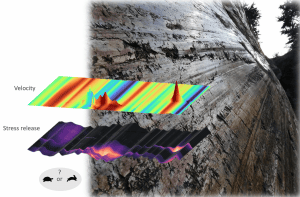Technopole Environnement Arbois-Méditerranée
BP 80 13545 Aix-en-Provence, cedex 04 - France
Tel : (+33) (0)4 13 94 91 00
- The CEREGE
-
-
The CEREGE
As an international multidisciplinary research and teaching centre and a centre of excellence in terms of human and technical resources, CEREGE covers almost the entire field of environmental geosciences.
-
-
- Science
-
-
Science
By joining forces with other major national and international research structures and with industrial and technological players, CEREGE is now a centre of excellence in the field of geosciences.
-
-
- Equipments
-
-
Equipments
CEREGE provides the academic and industrial scientific community with a range of high-tech resources.
-
-
- Academic Programs
-
-
Academic Programs
CEREGE's teaching covers the entire spectrum of training in Earth and environmental sciences, from undergraduate to doctoral level.
-
-
- Communication
-
-
Communication
Through the dissemination of its scientific communication, CEREGE aims to establish a permanent dialogue between science, research and the general public, especially the younger generation.
-
-
- You are?
- Directory
- Intranet



